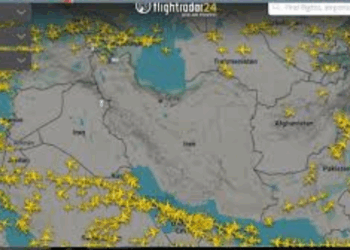Cairo/Jerusalem/Gaza, April 15, 2025: The latest round of ceasefire negotiations in Cairo ended on Monday without a breakthrough, according to Palestinian and Egyptian sources. Talks focused on restoring the collapsed truce in Gaza and securing the release of Israeli hostages held by Hamas.
Hamas, represented by a delegation led by its Gaza chief Khalil Al-Hayya, maintained its core demand: that any agreement must include a complete end to Israel’s military campaign and a full withdrawal from the Gaza Strip. While some flexibility was shown in terms of the number of hostages Hamas could release in exchange for Palestinian prisoners, fundamental disagreements persist.
An Egyptian official told Reuters that Hamas was considering a new Israeli proposal that would see an increased number of hostages released. Israeli Minister Zeev Elkin confirmed that Israel is now seeking the release of around 10 hostages, up from a previous offer of five.
However, Hamas has yet to formally respond, with sources indicating the group is seeking assurances that Israel would commit to the second phase of the ceasefire agreement—one that leads to a permanent end to hostilities.
Egyptian and Qatari mediators have submitted Israel’s latest ceasefire proposal, which, for the first time, reportedly includes a call for Hamas to disarm in the second phase of the agreement. A senior Hamas official, Sami Abu Zuhri, categorically rejected this condition, calling it a “million red lines” that are non-negotiable.
“The resistance will not hand over its weapons. This demand is not even up for discussion,” said Abu Zuhri.
Hamas reiterated that its position remains unchanged: any truce must result in a full Israeli military withdrawal and a permanent end to the war.
Since resuming its offensive in March, Israel has intensified its military operations in Gaza. According to Palestinian health authorities, over 1,500 Palestinians have been killed in the renewed assault, many of them civilians. The fighting has also displaced hundreds of thousands more, amid widespread destruction and a total blockade of humanitarian aid.
Rescue efforts continued in areas hit by recent airstrikes. In Jabalia, northern Gaza, civil defense workers searched the rubble of a collapsed building where up to 25 people were reportedly killed. The Israeli military claimed it targeted militants planning an ambush.
In Khan Younis, a tent camp was leveled by an airstrike, leaving families once again homeless. “Our homes were destroyed. Then our tents were destroyed. Now we have nothing left,” said local resident Ismail al-Raqab.
On Sunday, Egyptian President Abdel Fattah al-Sisi met with Qatari Emir Sheikh Tamim bin Hamad Al-Thani in Doha to discuss the mediation process. Egypt has reportedly requested additional international guarantees to support any potential agreement.
Meanwhile, the U.S. has expressed optimism about the talks. Former President Donald Trump, who supports Israel’s military campaign and has urged Palestinian civilians to leave Gaza, claimed progress is being made toward the return of hostages.
The war began after Hamas’s October 7, 2023 attack on southern Israel, which left 1,200 people dead and 251 taken hostage, according to Israeli authorities. Since then, more than 50,900 Palestinians have been killed in Israeli operations, according to Gaza’s health ministry.
The initial ceasefire, agreed in January, saw 33 Israeli hostages freed in exchange for hundreds of Palestinian detainees. However, the second phase—meant to facilitate a permanent ceasefire—was never implemented. Currently, 59 Israeli hostages remain in Gaza, with Israel believing around 24 of them are still alive.








